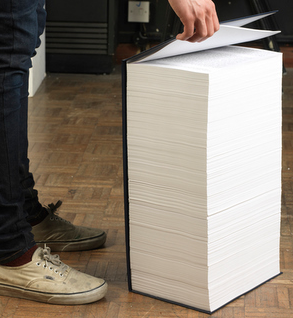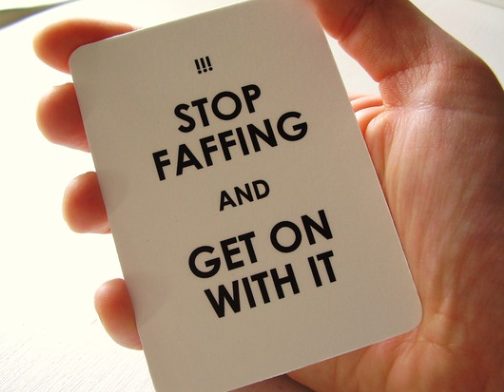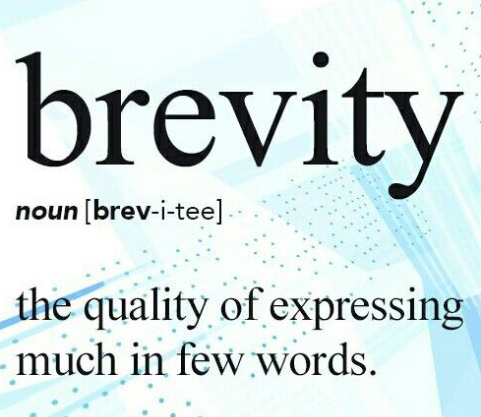10 Health and Safety Myths – #6 Safety Manuals – You’d Think it Would be Simple
This post is an opinion-piece based on the awful safety manuals I have seen. I have done many years of auditing and also designing safety management systems. I know what works and I also see what doesn’t work.
Fact: Nobody reads safety manuals except for the nutters who wrote them and the occasional auditor (who just cherry-picks). And we all know how much smoke and mirrors the average audit is. The result: Safety manuals are mostly useless. Not because they lack content. But because most safety manuals are put together by people who have one eye on the mirror; who are detached from reality and have no desire to test if what they are doing is a valuable experience for the intended recipient. In fact, a reliable indicator of the uselessness of safety manuals can be assessed by the following:
 How thick is it? If you can slide it under a well-fitted door, you may be in business. But burn it if you can use it for a doorstop in a gale.
How thick is it? If you can slide it under a well-fitted door, you may be in business. But burn it if you can use it for a doorstop in a gale.- Trash it if every section includes wordy sub-headings like Background, Context, Purpose, Scope and Responsibilities.
- Is it written in a gushy, verbose and rallying style for the purpose of motivating the reader? Shred it.
- Does it direct authoritarian instructions personally at the reader? “You must not, under any circumstances, smoke anywhere at all on the site”. “It is YOUR responsibility to work safely and report ALL hazards to management”. Sink it in a swamp.
- Long, unbroken paragraphs using long, unbroken sentences containing long words and phrases? Drop it in a deep lake.
- Feed it to the dogs if you are required to “refer to Figure A, or paragraph 3.2.1.1 (f), or Schedule XVI, or Appendix 23”
Now, I’m not against safety manuals per se. In health and safety, we wouldn’t use the Act or Regulations as safety manuals because they are deliberately imprecise and convoluted. So we condense processes down into simple, direct and unquivocal instructions. No wishy washy stuff, just clear and accessible directions…
And therein lies the problem. The authors of what ought to be straightforward safety manuals seem to get drenched in misplaced passion. They can’t help themselves. It’s like they have to extrude a long fat sausage. But put yourself in the place of a night shift supervisor where a serious event has just happened. People are running around shouting and you just want 5 dot-points or a flow chart. But the corporate office in Gobbledegook Land has a precious Doorstop Manual instead. Which is why you never read it. And now you have to wade through 95% of irrelevant twaddle to find something to help you.
Why can’t it be simple? No purpose is served by turning a molehill into a mountain. Whose ego was satisfied and at what cost?
The real purpose of safety manuals
The purpose is certainly not to sit on the shelf gathering dust until audit time.
- Years ago, safety manuals were exclusively paper. The very worst ones still are. One purpose is to have sections to describe procedures and policies. (Usually, overdone, pompous, unusable mush). And the other purpose is to offer a collection of forms used to record events, actions, plans and reviews. Nothing wrong with the intent. Just the outcome. Generally awful!
- These days, records are increasingly kept electronically as documents, spreadsheets or on some sort of computer application. But there still needs to be some workflows, prompts or written procedures to assist in getting the right things done in the right order. Remarkably, with apps and other electronic facilities, the procedures are all but absent. One extreme to another.
 Regardless of the quality or volume of the procedures, what matters isn’t that you have the procedures, or even how detailed/accurate they are, it’s that you are actually doing the key stuff adequately. Worksafe don’t really give a monkey’s about procedures after a bad event. They will be looking to see if you were doing what was reasonably practicable under the circumstances (for the risk). We can wave our fat safety manuals at them as much as we like.
Regardless of the quality or volume of the procedures, what matters isn’t that you have the procedures, or even how detailed/accurate they are, it’s that you are actually doing the key stuff adequately. Worksafe don’t really give a monkey’s about procedures after a bad event. They will be looking to see if you were doing what was reasonably practicable under the circumstances (for the risk). We can wave our fat safety manuals at them as much as we like.- At this point, may I do a brief plug for our SafetyBase software? It has everything you need. Including procedures and prompts. Thank you.
OK, so what does work?
- First of all, I feel for you large corporates. There is often a doorstop manual which you can only change under pain of death. But why not design a quick reference pocket version to run alongside it?
 I can prove that safety manuals don’t need more than two pages per section (chapter). You just need the key details, not a life story. “When THIS happens, THAT gets done using Form 1. When THATS done, do THIS and report to (role).”
I can prove that safety manuals don’t need more than two pages per section (chapter). You just need the key details, not a life story. “When THIS happens, THAT gets done using Form 1. When THATS done, do THIS and report to (role).”- Flow charts are good. Each section of a safety manual can be put into a one-page flow chart. If the flow chart needs to be more than one page, take away some unnecessary detail or check if there is more than one process that you are trying to represent.
- For operational procedures such as use of machinery and equipment, include a few well-chosen pictures or diagrams.
I sell safety systems. I still have “paper based” systems as well as in the cloud. And I always ask if the client will be implementing it and putting in place the routines required for a living system. Because I supply an implementation plan and a service to mentor them through it. They nearly always say they are going to do it properly but rarely does that happen. Some of them just want the manual and policies so they can send it to the agencies, corporates and authorities who use their services. I regret it when a client doesn’t implement my systems, because it can come back as a judgement of my company. “Yeah, we tried that SafetyPro system and it didn’t work”. But that’s code for “We never got started on it in the first place”. Well, you can lead a horse to water…
The point here is that a lot of employers have it in the back of their minds that buying a manual/system/policy or whatever you want to call it, is a magic wand. Same as the corporate tomes that sit on a shelf. There is a vague feeling of security that a bulky manual of great complexity fends off evil spirits. It doesn’t.
Nor does a nice simple, come to that, unless some effort goes into implementation. But a simple one is easier to use and easier to implement.
Contact me if I can help you with any safety stuff. Call 0800 000 267 for a welcoming chat, or email simon@safetypro.co.nz
- Simon Lawrence is Director of SafetyPro Limited.
- Consulting for safety: Safety Advice, Problem Solving, Audits and Training
- Call 0800 000 267 for a welcoming chat, or email simon@safetypro.co.nz
My 10 Health & Safety Myths. Planned topics and dates.
-
- # 1: Passion for Safety – Please no! 29 August 2019
- #2 Lost Time Injury Rates – Dark Arts in the Boardroom. 18 September 2019
- #3 Zero Harm – Stop Taking it Literally! 9 October 2019
- #4 We Have a Safety Culture – Yeah. Nah! 30 October 2019
- #5 Safety Audits – Smoke and Mirrors 20 November 2019
- #6 Safety Manuals – You’d Think it Would be Simple 31 January 2019
- #7 Safety Policy Statements – You Are Committed to What? 21 February 2020
- #8 The Hazard Register – What Is It Really For? 7 August 2020
- #9 Accident Investigation – Tick & Flick 28 August 2020
- #10 Contractor Management – The Thin Paper Wall 18 September 2020
Check out our SafetyBase software
- View a 4 minute video overview. Please like or share.
- Browse the SafetyBase website.
- Short cut to the all-important Pricing Page. No hidden costs.
- Download a PDF Fact Sheet to show to your Senior Leadership Team.
Call me, Simon, on 0800 000 267 or email simon@safetypro.co.nz You could be trying out this highly effective health and safety software system in minutes

